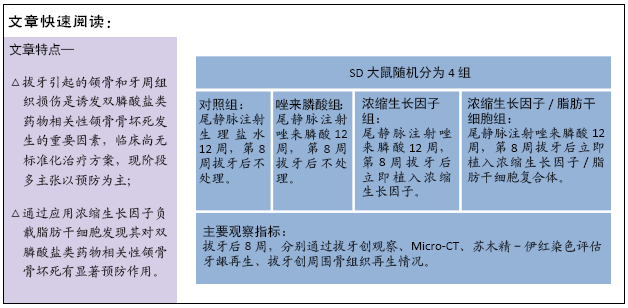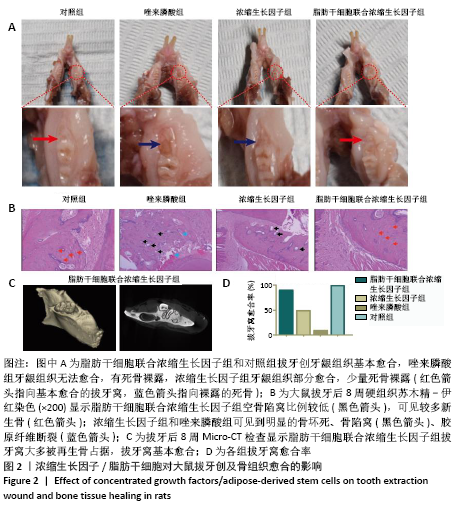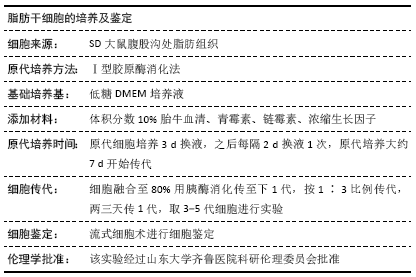[1] ADVISORY TASK FORCE ON BISPHOSPHONATE-RELATED OSTENONECROSIS OF THE JAWS, AMERICAN ASSOCIATION OF ORAL AND MAXILLOFACIAL SURGEONS. American Association of Oral and Maxillofacial Surgeons position paper on bisphosphonate-related osteonecrosis of the jaws. J Oral Maxillofac Surg. 2007;65(3):369-376.
[2] MAVROKOKKI T, CHENG A, STEIN B, et al. Nature and frequency of bisphosphonate-associated osteonecrosis of the jaws in Australia. J Oral Maxillofac Surg. 2007;65(3):415-423.
[3] SAKAGUCHI O, KOKURYO S, TSURUSHIMA H, et al. Lipopolysaccharide aggravates bisphosphonate-induced osteonecrosis in rats. Int J Oral Maxillofac Surg. 2015;44(4):528-534.
[4] MARX RE, SAWATARI Y, FORTIN M, et al. Bisphosphonate-induced exposed bone (osteonecrosis/osteopetrosis) of the jaws: risk factors, recognition, prevention, and treatment. J Oral Maxillofac Surg. 2005; 63(11):1567-1575.
[5] FLIEFEL R, TRÖLTZSCH M, KÜHNISCH J, et al. Treatment strategies and outcomes of bisphosphonate-related osteonecrosis of the jaw (BRONJ) with characterization of patients: a systematic review. Int J Oral Maxillofac Surg. 2015;44(5):568-585.
[6] MATSUMOTO A, SASAKI M, SCHMELZEISEN R, et al. Primary wound closure after tooth extraction for prevention of medication-related osteonecrosis of the jaw in patients under denosumab. Clin Oral Investig. 2017;21(1):127-134.
[7] RISTOW O, RÜCKSCHLOß T, BODEM J, et al. Double-layer closure techniques after bone surgery of medication-related osteonecrosis of the jaw - A single center cohort study. J Craniomaxillofac Surg. 2018;46(5):815-824.
[8] NONNENMÜHLEN N, BURNIC A, BARTELLA A, et al. Comparison of mucosal and mucoperiosteal wound cover for the treatment of medication-related osteonecrosis of the jaw lesions: a retrospective cohort study. Clin Oral Investig. 2019;23(1):351-359.
[9] HASEGAWA T, KAWAKITA A, UEDA N, et al. A multicenter retrospective study of the risk factors associated with medication-related osteonecrosis of the jaw after tooth extraction in patients receiving oral bisphosphonate therapy: can primary wound closure and a drug holiday really prevent MRONJ? Osteoporos Int. 2017;28(8):2465-2473.
[10] LIU SS, LIN TY, FU E, et al. Immediate hyperbaric oxygen after tooth extraction ameliorates bisphosphonate-related osteonecrotic lesion in rats. J Periodontol. 2019;90(12):1449-1456.
[11] SILVA ML, TASSO L, AZAMBUJA AA, et al. Effect of hyperbaric oxygen therapy on tooth extraction sites in rats subjected to bisphosphonate therapy-histomorphometric and immunohistochemical analysis. Clin Oral Investig. 2017;21(1):199-210.
[12] VOSS PJ, MATSUMOTO A, ALVARADO E, et al. Treatment of stage II medication-related osteonecrosis of the jaw with necrosectomy and autologous bone marrow mesenchymal stem cells. Odontology. 2017;105(4):484-493.
[13] OGATA K, KATAGIRI W, OSUGI M, et al. Evaluation of the therapeutic effects of conditioned media from mesenchymal stem cells in a rat bisphosphonate-related osteonecrosis of the jaw-like model. Bone. 2015;74:95-105.
[14] VALENTE NA, CHATELAIN S, ALFONSI F, et al. Medication-Related Osteonecrosis of the Jaw: The Use of Leukocyte-Platelet-Rich Fibrin as an Adjunct in the Treatment. J Craniofac Surg. 2019;30(4):1095-1101.
[15] CARDOSO CL, CURRA C, CURI MM, et al. Treatment of bisphosphonate-related osteonecrosis using platelet-rich plasma: microtomographic, microscopic, and immunohistochemical analyses. Braz Oral Res. 2019; 33:e050.
[16] QIAO J, AN N, OUYANG X. Quantification of growth factors in different platelet concentrates. Platelets. 2017;28(8):774-778.
[17] ZHANG S, MA B, LIU F, et al. Polylactic Acid Nanopillar Array-Driven Osteogenic Differentiation of Human Adipose-Derived Stem Cells Determined by Pillar Diameter. Nano Lett. 2018;18(4):2243-2253.
[18] ALONSO-RODRIGUEZ E, GONZÁLEZ-MARTÍN-MORO J, CEBRIÁN-CARRETERO JL, et al. Bisphosphonate-related osteonecrosis. Application of adipose-derived stem cells in an experimental murine model. Med Oral Patol Oral Cir Bucal. 2019;24(4):e529-e536.
[19] ZANG X, HE L, ZHAO L, et al. Adipose-derived stem cells prevent the onset of bisphosphonate-related osteonecrosis of the jaw through transforming growth factor β-1-mediated gingival wound healing. Stem Cell Res Ther. 2019;10(1):169.
[20] 陈霞. 自体浓缩生长因子(CGF)促进BMSCs成骨的研究[D].上海:上海交通大学,2017.
[21] HEUFELDER MJ, HENDRICKS J, REMMERBACH T, et al. Principles of oral surgery for prevention of bisphosphonate-related osteonecrosis of the jaw. Oral Surg Oral Med Oral Pathol Oral Radiol. 2014;117(6):e429-435.
[22] OTTO S, TRÖLTZSCH M, JAMBROVIC V, et al. Tooth extraction in patients receiving oral or intravenous bisphosphonate administration: A trigger for BRONJ development? J Craniomaxillofac Surg. 2015;43(6):847-854.
[23] KIM TH, KIM SH, SÁNDOR GK, et al. Comparison of platelet-rich plasma (PRP), platelet-rich fibrin (PRF), and concentrated growth factor (CGF) in rabbit-skull defect healing. Arch Oral Biol. 2014;59(5):550-558.
[24] SOHN DS, HEO JU, KWAK DH, et al. Bone regeneration in the maxillary sinus using an autologous fibrin-rich block with concentrated growth factors alone. Implant Dent. 2011;20(5):389-395.
[25] CHEN X, WANG J, YU L, et al. Effect of Concentrated Growth Factor (CGF) on the Promotion of Osteogenesis in Bone Marrow Stromal Cells (BMSC) in vivo. Sci Rep. 2018;8(1):5876.
[26] YU B, WANG Z. Effect of concentrated growth factors on beagle periodontal ligament stem cells in vitro. Mol Med Rep. 2014;9(1): 235-242.
[27] HONG S, CHEN W, JIANG B. A Comparative Evaluation of Concentrated Growth Factor and Platelet-rich Fibrin on the Proliferation, Migration, and Differentiation of Human Stem Cells of the Apical Papilla. J Endod. 2018;44(6):977-983.
[28] ELÇIN AE, PARMAKSIZ M, DOGAN A, et al. Differential gene expression profiling of human adipose stem cells differentiating into smooth muscle-like cells by TGFβ1/BMP4. Exp Cell Res. 2017;352(2):207-217.
[29] GALLEGO-MUÑOZ P, IBARES-FRÍAS L, VALSERO-BLANCO MC, et al. Effects of TGFβ1, PDGF-BB, and bFGF, on human corneal fibroblasts proliferation and differentiation during stromal repair. Cytokine. 2017; 96:94-101.
[30] CARANO RA, FILVAROFF EH. Angiogenesis and bone repair. Drug Discov Today. 2003;8(21):980-989.
[31] RINDONE AN, KACHNIARZ B, ACHEBE CC, et al. Heparin-Conjugated Decellularized Bone Particles Promote Enhanced Osteogenic Signaling of PDGF-BB to Adipose-Derived Stem Cells in Tissue Engineered Bone Grafts. Adv Healthc Mater. 2019;8(10):e1801565.
[32] WINET H. The role of microvasculature in normal and perturbed bone healing as revealed by intravital microscopy. Bone. 1996;19(1 Suppl): 39S-57S.
[33] SURESH V, WEST JL. 3D Culture Facilitates VEGF-Stimulated Endothelial Differentiation of Adipose-Derived Stem Cells. Ann Biomed Eng. 2020; 48(3):1034-1044.
[34] MASUKI H, OKUDERA T, WATANEBE T, et al. Growth factor and pro-inflammatory cytokine contents in platelet-rich plasma (PRP), plasma rich in growth factors (PRGF), advanced platelet-rich fibrin (A-PRF), and concentrated growth factors (CGF). Int J Implant Dent. 2016;2(1):19.
[35] PARK HC, KIM SG, OH JS, et al. Early Bone Formation at a Femur Defect Using CGF and PRF Grafts in Adult Dogs: A Comparative Study. Implant Dent. 2016;25(3):387-393.
[36] RODELLA LF, FAVERO G, BONINSEGNA R, et al. Growth factors, CD34 positive cells, and fibrin network analysis in concentrated growth factors fraction. Microsc Res Tech. 2011;74(8):772-777.
[37] BONAZZA V, HAJISTILLY C, PATEL D, et al. Growth Factors Release From Concentrated Growth Factors: Effect of β-Tricalcium Phosphate Addition. J Craniofac Surg. 2018;29(8):2291-2295.
[38] POURGONABADI S, MOUSAVI SH, TAYARANI-NAJARAN Z, et al. Effect of zoledronate, a third-generation bisphosphonate, on proliferation and apoptosis of human dental pulp stem cells. Can J Physiol Pharmacol. 2018;96(2):137-144.
[39] KUROSHIMA S, NAKAJIMA K, SASAKI M, et al. Systemic administration of quality- and quantity-controlled PBMNCs reduces bisphosphonate-related osteonecrosis of jaw-like lesions in mice. Stem Cell Res Ther. 2019;10(1):209.
[40] GLOWACKI J. Angiogenesis in fracture repair. Clin Orthop Relat Res. 1998;(355 Suppl):S82-89.
|



